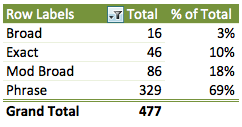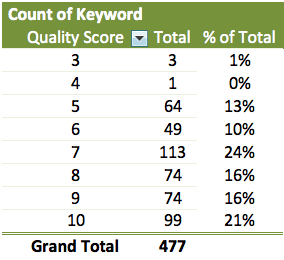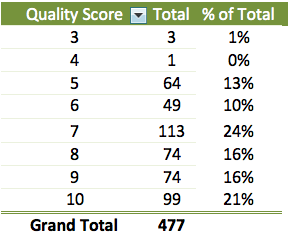If you inherit an existing account to manage, there can be a tremendous amount of data to sift through, and a lot to learn. It’s easy to get caught up in all the details and miss out on the small, yet important, aspects of the account. When I first began working as an account manager, I was definitely overwhelmed when given a new account. Where was I supposed to begin?
Over the past few months, though, I’ve learned through experience a few key items that need to be figured out right from the start. This list is certainly not exhaustive. These are just a few aspects I’ve learned that give valuable insight to the account, and in some cases, are easily overlooked.
1. Conversion types being tracked
If you inherit an existing account, it’s easy to take for granted the conversion types set up in the account. But, it is worthwhile to spend some time understanding what is actually being tracked. When I was just starting out as an account manager, I didn’t necessarily give this adequate attention. If the account is lead gen, how does that translate into sales? Does the client have a CRM system, or information, they can get you about what campaigns/keywords are the most valuable?
Understanding the value of different types of conversions is imperative. You want to ensure you are tracking the most relevant type. Maybe the client is only tracking transactions, but there is a lead form that gets their sales team valuable information. Tracking this lead form might help the client see the value of leads coming in through PPC.
You also want to make sure that what they are tracking makes sense. Maybe they set up a conversion type that, while it converts well, doesn’t necessarily translate into a valuable lead or sale. These leads might be polluting the data and not giving you a true picture of what is happening in the account.
2. Negative keywords
Negative keywords can be an invaluable tool in an account, if used correctly. Under utilizing (or using too many) can cause issues, though. You will want to audit the keywords in the account and make sure you aren’t missing out on relevant traffic. Sometimes in an effort to stop some irrelevant traffic, a phrase keyword could be added that is actually limiting relevant traffic as well.
On the flip side, you want to also pull an SQR and see if there are obvious negatives that could be added to the account to remove unwanted traffic and save money. The key thing is communication. If you aren’t familiar with the client’s industry, you may make an incorrect assumption about a certain keyword’s relevance.
3. Quality score of keywords
It’s important to understand the keyword landscape in the account. One way I do this is by looking at the quality scores of the keywords. I’ll pull a keyword report and then create a pivot table in Excel to see what percent of keywords are at the various quality score levels. Low quality scores could speak to a potential need for restructuring the account to create tighter ad groups. If the structure seems pretty tight, maybe some more work on the ad copy is needed. Or, perhaps it speaks to issues with relevancy on the landing page.
Pivot table for keyword QS
4. Mix of different match types
Just like I pull a pivot table for quality score, I will also pull one for match types. I want to see what mix of match types I have in the account. I usually rename the modified broad match keywords as ‘Mod Broad’ instead of ‘Broad’. This way I get a good idea of how many regular broad match keywords there are in the account. Too many of these can cause potential issues, especially in Bing.
 5. Forms and conversion paths are working properly
5. Forms and conversion paths are working properly
This is another item that can be taken for granted, but it is important to check. Go to the destination URL and test how the site works. Go to the site organically and see how it behaves. We recently discovered a client’s form wasn’t loading when you went to the site through the organic listing. This is something that can easily be overlooked if you’ve been working in the account a while. When you are new on the account, it’s a great time to check through the site and make sure they haven’t missed out on a potential error that’s keeping them from getting leads.
Like I said, this is certainly not an exhaustive list. But, through my experience, I’ve learned these 5 aspects can be beneficial and give you insight into the account. Most of these point out some quick wins that can help you improve the overall quality of the account, right from the start.





